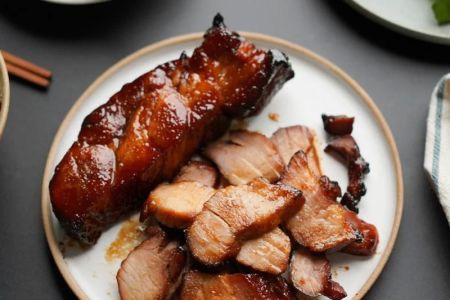How to Make Sweet and Sour Pork Like Chinese Restaurants
As someone who has always loved the tangy and crispy goodness of sweet and sour pork from Chinese restaurants, I decided it was time to master the dish myself at home. After experimenting with various recipes and techniques, I've discovered the perfect method to recreate this restaurant classic in my kitchen. In this article, I’ll walk you through how to make sweet and sour pork just like the Chinese restaurants do, from selecting the best pork cut to creating the ideal sauce.
1. Choosing the Right Pork Cut
The first step to making perfect sweet and sour pork is choosing the right cut of meat. While some recipes use pork tenderloin, I personally prefer to use pork shoulder for its balance of tenderness and flavor. Pork shoulder has the right amount of fat, which keeps the meat juicy and flavorful when fried. The key is to cut the pork into bite-sized cubes to ensure even cooking and that satisfying crispy texture on the outside.
When cutting the pork, make sure the pieces are not too large or too small. The ideal size should be around 1-inch cubes to allow for quick frying while keeping the meat tender on the inside. I recommend trimming any excess fat before cutting to maintain the right balance between texture and taste.
2. Preparing the Pork for Frying
Before frying the pork, it's important to marinate it in a simple yet flavorful mixture. I usually marinate the pork with a bit of soy sauce, cornstarch, and a pinch of salt. This helps the meat retain moisture and gives it a slight coating that will crisp up beautifully when fried. Some recipes also add a touch of rice wine or Shaoxing wine to tenderize the pork, but it’s optional.
Once the pork has marinated for about 15-20 minutes, it’s ready for the next step: frying. To achieve that signature crispy texture, I coat the pork pieces with a thin layer of cornstarch before frying. This creates a delicate, crispy exterior while keeping the inside tender and juicy. I recommend using a wok or a deep skillet for frying to ensure even cooking and a golden-brown crust.
3. Making the Sweet and Sour Sauce
Now comes the most important part of this dish—the sweet and sour sauce. The sauce is what gives sweet and sour pork its signature tangy and sweet flavor profile, and it's all about getting the balance just right. In a bowl, I mix equal parts sugar and vinegar (I prefer rice vinegar for a slightly milder taste), then add a bit of ketchup for that classic reddish color and flavor.
For added depth, I include a small amount of soy sauce and a splash of pineapple juice to enhance the sweetness and provide a bit of acidity. To thicken the sauce, I use a mixture of cornstarch and water, which creates that perfect glossy texture that clings to the pork. I always taste the sauce before serving, adjusting the sugar or vinegar to make sure it’s balanced between sweet and sour.
4. Frying the Pork and Assembling the Dish
Once the pork is fried to crispy perfection, it’s time to assemble the dish. I start by quickly stir-frying some sliced bell peppers, onions, and pineapples in a hot wok. These vegetables and fruits not only add color to the dish but also provide a fresh crunch that complements the crispy pork. After a quick stir-fry, I add the fried pork back into the wok, followed by the sweet and sour sauce.
As the sauce begins to heat up, it thickens and coats the pork and vegetables, creating a glossy, flavorful coating. I make sure to toss everything together, ensuring that each piece of pork is well-covered in the sauce. The final result should be a vibrant dish with a perfect balance of sweetness, tanginess, and crunch.
5. Serving the Sweet and Sour Pork
When it comes to serving the sweet and sour pork, I always serve it with a side of steamed jasmine rice. The fluffy rice absorbs the flavorful sauce, making each bite even more delicious. For a complete meal, I also like to pair it with some stir-fried vegetables or a light soup, creating a well-rounded dinner.
Sweet and sour pork is best enjoyed immediately after being made, as the crispy coating tends to soften over time. But if you’re planning to make it ahead, I recommend storing the pork and sauce separately and reheating them when ready to serve to maintain the crispy texture.
6. Tips for the Perfect Sweet and Sour Pork
- Use pork shoulder for the best balance of flavor and texture.
- Marinate the pork to keep it tender and juicy before frying.
- Use rice vinegar and pineapple juice for the ideal sweet and sour balance.
- Fry the pork in batches to avoid overcrowding and ensure crispiness.
- Adjust the sauce to your taste by tweaking the sweetness or sourness.
With these tips, you’ll be able to recreate the perfect sweet and sour pork, just like you’d find at a Chinese restaurant. The dish is a crowd-pleaser and makes for an impressive meal that’s sure to wow your family and friends. And the best part? You can enjoy it right at home, without needing to make a reservation.






![Top Chinese Restaurants for Authentic Cantonese Cuisine in [Your City]](https://img.gochinarose.com/d33/2507/4157910400_450x300.webp)
